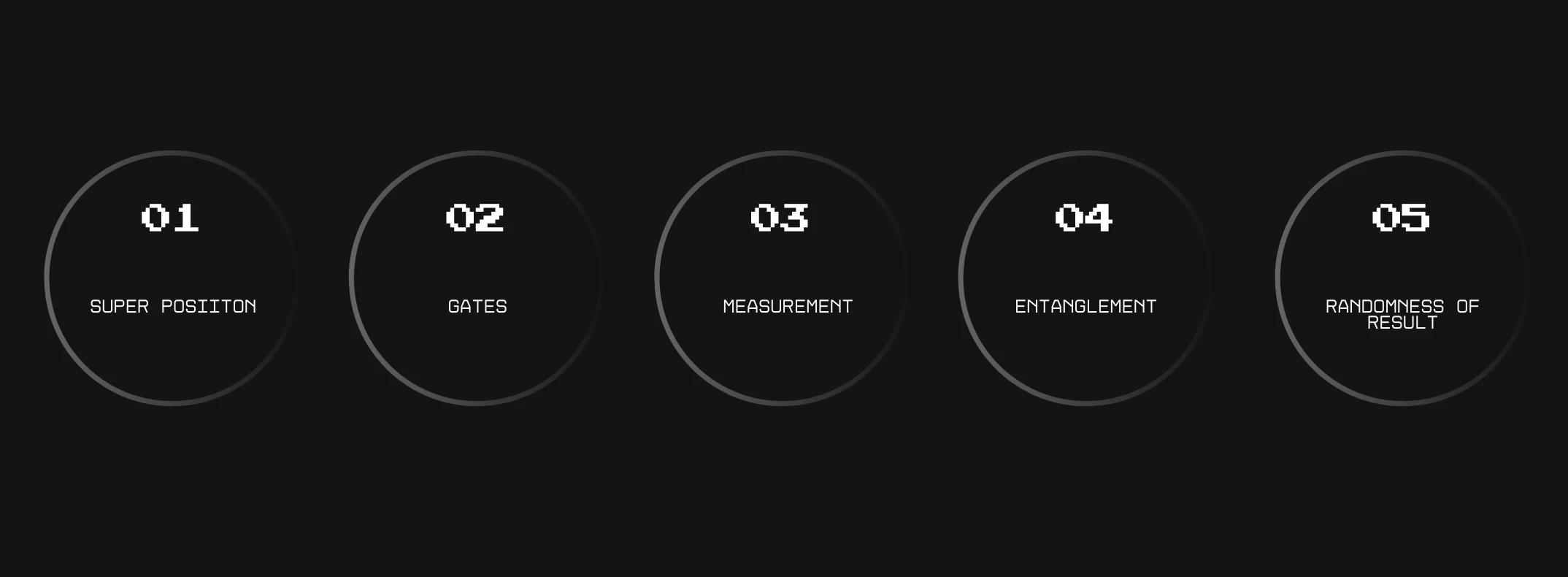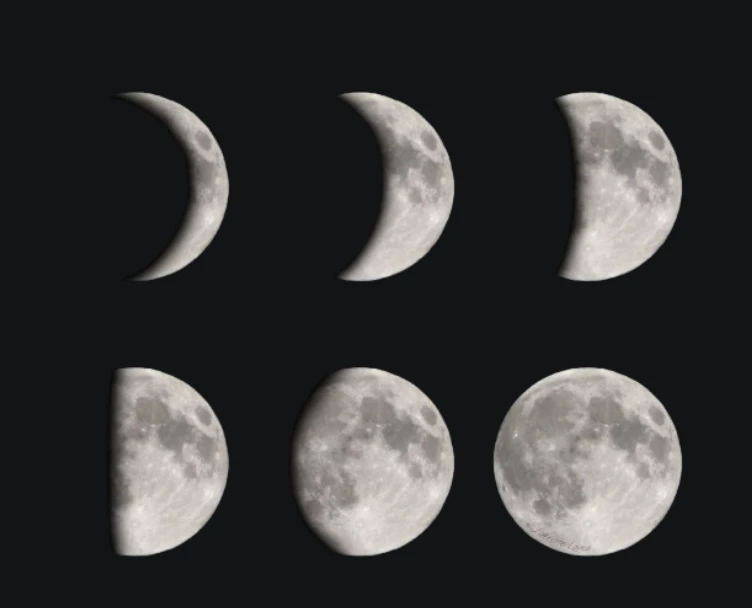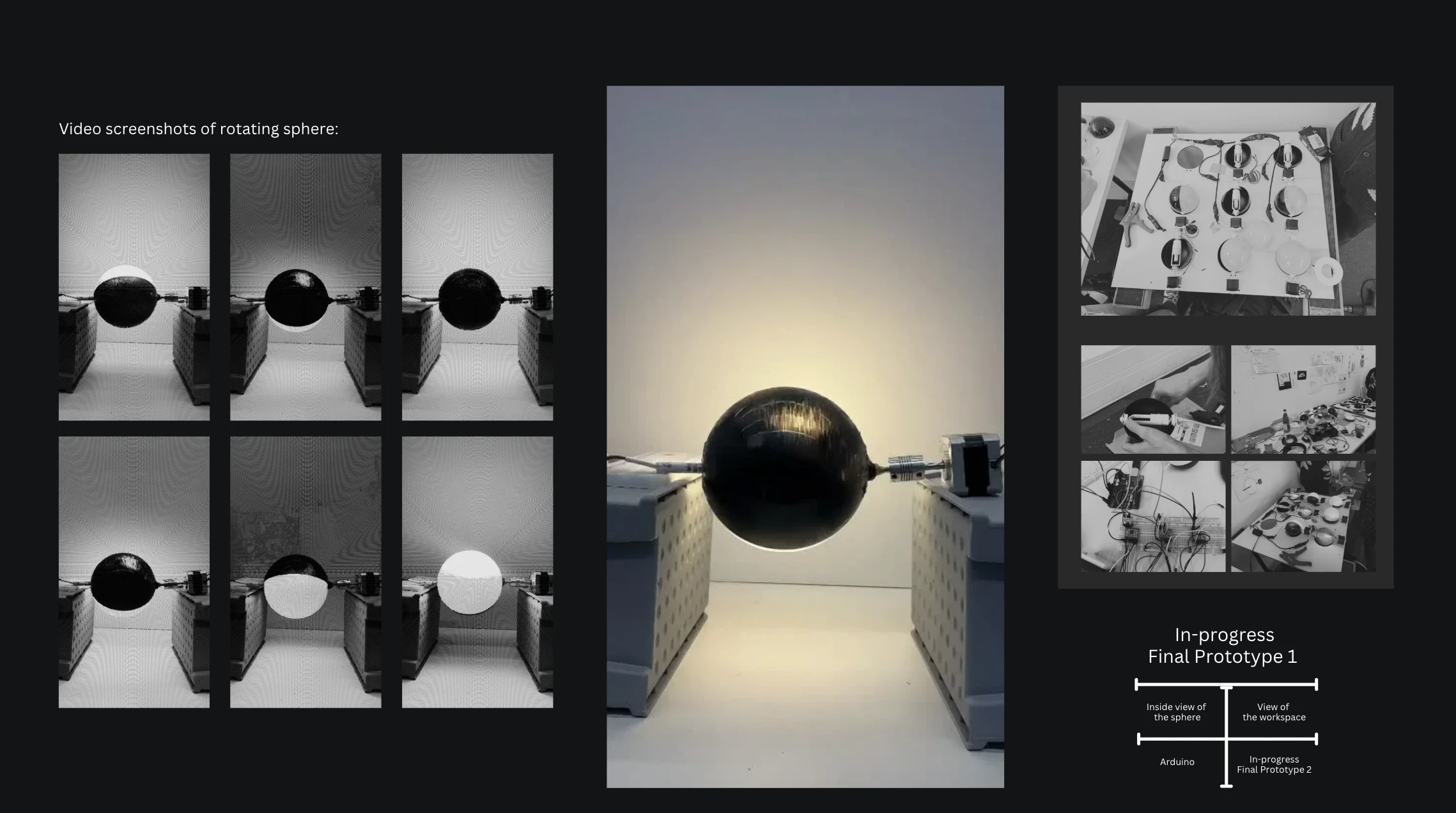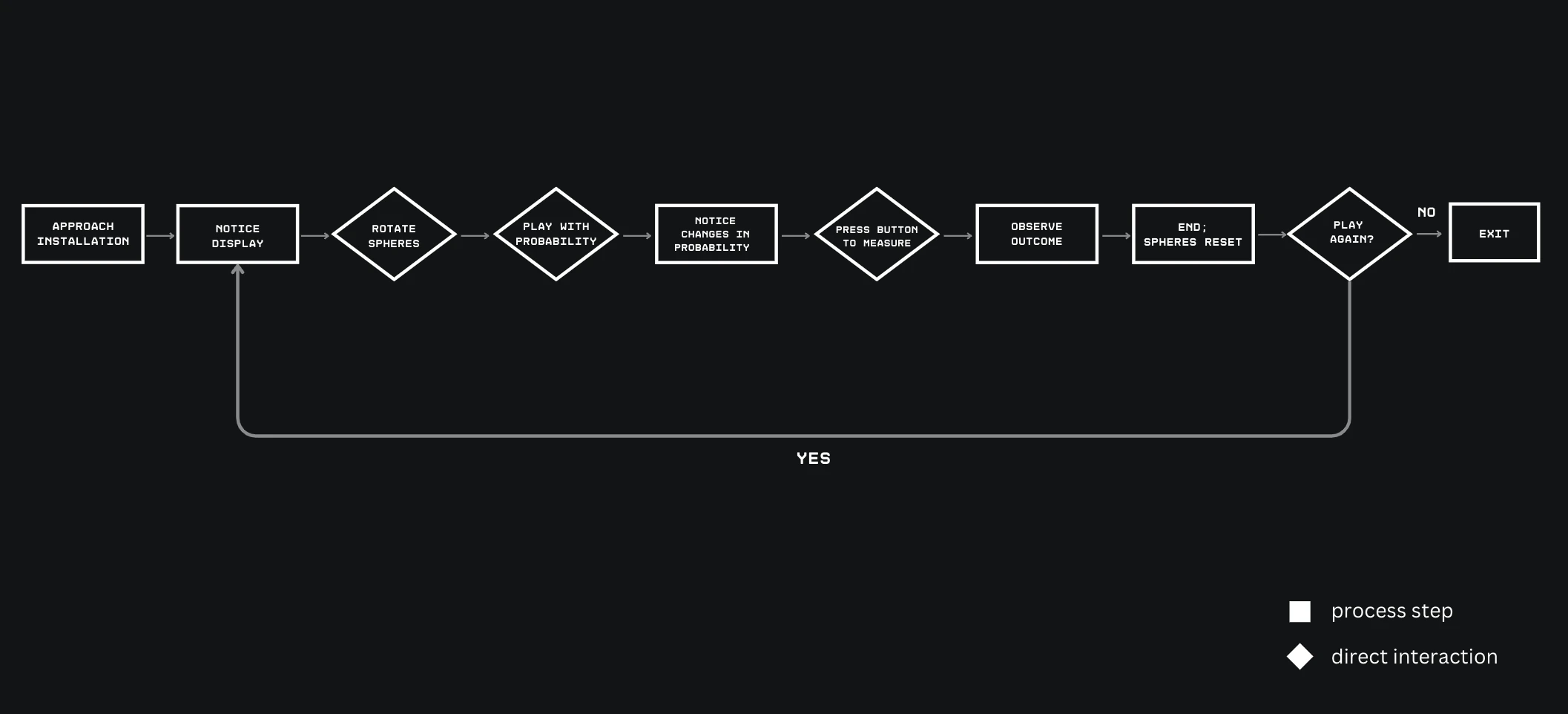


Quantum Abacus
Quantum Abacus
An interactive exhibit (prototype) illustrating the abstract scientific concepts of quantum superposition, the observer effect, and the application of quantum gates. It has been selected as the winning entry by the DLR Institute and the prototype is set to be implemented in DLR's work environment and produced in 2025. It will be showcased in the context of https://quantum2025.org.
An interactive exhibit (prototype) illustrating the abstract scientific concepts of quantum superposition, the observer effect, and the application of quantum gates. It has been selected as the winning entry by the DLR Institute and the prototype is set to be implemented in DLR's work environment and produced in 2025. It will be showcased in the context of https://quantum2025.org.
To read the article about the project, please visit https://kisd.de/projects/how-to-show-off-quantum-computing-kisd-x-parsons/.
To see online team portfolio, please visit here.
To read the article about the project, please visit https://kisd.de/projects/how-to-show-off-quantum-computing-kisd-x-parsons/.
To see online team portfolio, please visit here.
TEAM
TEAM
Cora Kindermann
Cora Kindermann
Milan Elsen
Milan Elsen
Sirui Liao
Sirui Liao
Sofia Pristash
Sofia Pristash
Zhouyu Zhang
Zhouyu Zhang
MY ROLE
MY ROLE
Experience Design
Experience Design
Interface Design
Interface Design
DIGITAL TOOL
DIGITAL TOOL
Figma
Figma
After Effects
After Effects
MEDIUM
MEDIUM
Arduino Nano
Arduino Nano
Arduino Uno
Arduino Uno
AS5600, A4988
AS5600, A4988
NEMA17
NEMA17
Rotary Encoder
Rotary Encoder
Stepper Motor
Stepper Motor
DURATION
DURATION
OCT - NOV 2024
OCT - NOV 2024
(8 weeks)
(8 weeks)
BACKGROUND
BACKGROUND
BACKGROUND
How can art and design communicate the abstract concepts of quantum computing to a larger audience?
How can art and design communicate the abstract concepts of quantum computing to a larger audience?
How can art and design communicate the abstract concepts of quantum computing to a larger audience?
The Köln International School of Design (Cologne, Germany) and the Parsons School of Design collaborated with the DLR (German Aerospace Center) Institute for AI Safety and Security (Department of Quantum AI and Quantum-classical Hybrid Systems) to develop concepts of interactive installations that help understand the weirdness of the quantum computing world. Through art and design, this collaboration deals with science communication and aims to creatively show quantum computing in a way that is accessible and exciting to engage with through physical interactions and materials.
The Köln International School of Design (Cologne, Germany) and the Parsons School of Design collaborated with the DLR (German Aerospace Center) Institute for AI Safety and Security (Department of Quantum AI and Quantum-classical Hybrid Systems) to develop concepts of interactive installations that help understand the weirdness of the quantum computing world. Through art and design, this collaboration deals with science communication and aims to creatively show quantum computing in a way that is accessible and exciting to engage with through physical interactions and materials.
The Köln International School of Design (Cologne, Germany) and the Parsons School of Design collaborated with the DLR (German Aerospace Center) Institute for AI Safety and Security (Department of Quantum AI and Quantum-classical Hybrid Systems) to develop concepts of interactive installations that help understand the weirdness of the quantum computing world. Through art and design, this collaboration deals with science communication and aims to creatively show quantum computing in a way that is accessible and exciting to engage with through physical interactions and materials.


SOLUTION
SOLUTION
SOLUTION
An interactive, kinetic installation
An interactive, kinetic installation
An interactive, kinetic installation
Unlike a traditional abacus which performs a fixed calculation result, our kinetic installation mimics the probabilistic nature of quantum computation.
Unlike a traditional abacus which performs a fixed calculation result, our kinetic installation mimics the probabilistic nature of quantum computation.
Unlike a traditional abacus which performs a fixed calculation result, our kinetic installation mimics the probabilistic nature of quantum computation.



CONCEPTS
CONCEPTS
Covered Quantum Concepts
Covered Quantum Concepts
Our project integrates five distinct quantum concepts, with a primary focus on quantum superposition.
Our project integrates five distinct quantum concepts, with a primary focus on quantum superposition.


Goal
Goal
Our project emphasizes the true random nature of qubits during the superposition state.
Audience
Audience
General public with/without background in quantum computing
Form
Form
Interactive installation of rotating spheres
Materials
Materials
/Technical
Arduino nano, Arduino uno, rotary encoder, AS5600, stepper motor, NEMA17, driver, A4988
/Mechanical
Plastic balls, lamps, cables, wood
IDEATION
IDEATION
IDEATION
Visual refrences
Visual refrences
Visual refrences
While our project draws technical inspiration from the traditional abacus to communicate the probabilistic nature of quantum computation; visually, we were inspired by the phases of the moon and the design of the Abalone game, as both showcase different states and interactive components. These elements served as a compelling visual framework to communicate our quantum concept to our audience.
While our project draws technical inspiration from the traditional abacus to communicate the probabilistic nature of quantum computation; visually, we were inspired by the phases of the moon and the design of the Abalone game, as both showcase different states and interactive components. These elements served as a compelling visual framework to communicate our quantum concept to our audience.
While our project draws technical inspiration from the traditional abacus to communicate the probabilistic nature of quantum computation; visually, we were inspired by the phases of the moon and the design of the Abalone game, as both showcase different states and interactive components. These elements served as a compelling visual framework to communicate our quantum concept to our audience.






Moon phases
Abalone
PROCESS
PROCESS
PROCESS
Design + Technical Ideation and Process
Design + Technical Ideation and Process
Design + Technical Ideation and Process
Our team began developing our concept through creating 3D renderings and low-fidelity paper prototypes. We also designed storyboards to outline the user interaction flow, which we iteratively refined and implemented into the final design.
Our team began developing our concept through creating 3D renderings and low-fidelity paper prototypes. We also designed storyboards to outline the user interaction flow, which we iteratively refined and implemented into the final design.
Our team began developing our concept through creating 3D renderings and low-fidelity paper prototypes. We also designed storyboards to outline the user interaction flow, which we iteratively refined and implemented into the final design.


Moon phases
Abalone



Color
Color
Dark and light represent the outcome of measurement, 0 or 1
Movement
Movement
Rotation allows to track the probability of qubit state.
Action
Action
Measurement provides a definite and observed answer while the probability is undeterminable





Further process shots
Further process shots
Further process shots




Rotating sphere prototype built with Arduino to display different representative states (light or dark).
Rotating sphere prototype built with Arduino to display different representative states (light or dark).
Rotating sphere prototype built with Arduino to display different representative states (light or dark).
USER FLOW
USER FLOW
USER FLOW
User interaction flow with our interactive installation
User interaction flow with our interactive installation
User interaction flow with our interactive installation
In my team, I focused on designing the user flow for interacting with our prototype and creating the visual interface to enhance the communication of the quantum concept during user interaction.
In my team, I focused on designing the user flow for interacting with our prototype and creating the visual interface to enhance the communication of the quantum concept during user interaction.
In my team, I focused on designing the user flow for interacting with our prototype and creating the visual interface to enhance the communication of the quantum concept during user interaction.



User Flow Diagram (Text)
User Flow Diagram (Text)
User Flow Diagram (Text)



User Flow Diagram (Image)
User Flow Diagram (Image)
(Sample Walkthrough) Video prototype of the display screen on our installation
(Sample Walkthrough)
Video prototype of the display screen on our installation
(Sample Walkthrough) Video prototype of the display screen on our installation
FINAL
FINAL
FINAL
3D mockup and built prototype
3D mockup and built prototype
3D mockup and built prototype
HOW MIGHT WE?
Problem Statement
While the Guggenheim Museum's official website offers in-depth guides and assistance, the on-site experience falls short, leading to frustration and limited engagement for visitors.
What are the existing pain points during in-person visits to the Guggenheim?
How can visitors interact and augment their experience at the museum?
FINAL THOUGHTS
FINAL THOUGHTS
FINAL THOUGHTS
Winning entry! What comes next?
Winning entry! What comes next?
Winning entry! What comes next?
Out of all contestants, our prototype has been selected as the winning entry by the DLR Institute. Our prototype is set to be implemented in DLR's work environment and produced in 2025. It will be showcased in the context of https://quantum2025.org.
Out of all contestants, our prototype has been selected as the winning entry by the DLR Institute. Our prototype is set to be implemented in DLR's work environment and produced in 2025. It will be showcased in the context of https://quantum2025.org.
Out of all contestants, our prototype has been selected as the winning entry by the DLR Institute. Our prototype is set to be implemented in DLR's work environment and produced in 2025. It will be showcased in the context of https://quantum2025.org.


Areas for enhancement
Areas for enhancement
Areas for enhancement
Our team has agreed that to enhance the prototype even further, we could also incorporate the idea of entanglement within user interaction with the spheres.
Regarding technical enhancement, with additional time and resources, we would further our prototype by incorporating higher-end, smaller scaled motors, allowing for greater precision and enabling more of the spheres to be visibly exposed on the surface for interaction.
Our team has agreed that to enhance the prototype even further, we could also incorporate the idea of entanglement within user interaction with the spheres.
Regarding technical enhancement, with additional time and resources, we would further our prototype by incorporating higher-end, smaller scaled motors, allowing for greater precision and enabling more of the spheres to be visibly exposed on the surface for interaction.
Our team has agreed that to enhance the prototype even further, we could also incorporate the idea of entanglement within user interaction with the spheres.
Regarding technical enhancement, with additional time and resources, we would further our prototype by incorporating higher-end, smaller scaled motors, allowing for greater precision and enabling more of the spheres to be visibly exposed on the surface for interaction.


Quantum Abacus
An interactive exhibit (prototype) illustrating the abstract scientific concepts of quantum superposition, the observer effect, and the application of quantum gates. It has been selected as the winning entry by the DLR Institute and the prototype is set to be implemented in DLR's work environment and produced in 2025. It will be showcased in the context of https://quantum2025.org.
To read the article about the project, please visit https://kisd.de/projects/how-to-show-off-quantum-computing-kisd-x-parsons/.
To see online team portfolio, please visit here.
TOOL
Cora Kindermann
Milan Elsen
Sirui Liao
Sofia Pristash
Zhouyu Zhange
MEDIUM
Arduino Nano
Arduino Uno
AS5600, A4988
NEMA17
Rotary Encoder
Stepper Motor
MY ROLE
Experience Design
Interface Design
DIGITAL TOOL
Figma
After Effects
DURATION
OCT - NOV 2024
(8 weeks)
CONCEPTS
Covered Quantum Concepts
Our project integrates five distinct quantum concepts, with a primary focus on quantum superposition.


Goal
Our project emphasizes the true random nature of qubits during the superposition state.
Audience
General public with/without background in quantum computing
Form
Interactive installation of rotating spheres
Materials
/Technical
Arduino nano, Arduino uno, rotary encoder, AS5600, stepper motor, NEMA17, driver, A4988
/Mechanical
Plastic balls, lamps, cables, wood